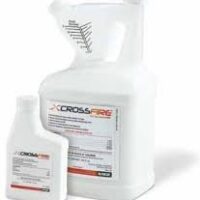
Investigating the suitability of the Calgary Biofilm Device for assessing the antimicrobial efficacy of new agents. In vitro susceptibility to antibiotics of staphylococci in biofilms isolated from orthopaedic infections. The use of microscopy and three-dimensional visualization to evaluate the structure of microbial biofilms cultivated in the Calgary Biofilm Device. Role of multicellular aggregates in biofilm formation. Into the well-a close look at the complex structures of a microtiter biofilm and the crystal violet assay. Microtiter susceptibility testing of microbes growing on peg lids: a miniaturized biofilm model for high-throughput screening. The Calgary Biofilm Device: new technology for rapid determination of antibiotic susceptibilities of bacterial biofilms. The BioFilm Ring Test: a rapid method for routine analysis of Pseudomonas aeruginosa biofilm formation kinetics. High-throughput screening of metal- N-heterocyclic carbene complexes against biofilm formation by pathogenic bacteria. The biofilm architecture of sixty opportunistic pathogens deciphered using a high throughput CLSM method. High-throughput microfluidic method to study biofilm formation and host-pathogen interactions in pathogenic Escherichia coli. Image-based 384-well high-throughput screening method for the discovery of skyllamycins A to C as biofilm inhibitors and inducers of biofilm detachment in Pseudomonas aeruginosa. Robust biofilm assay for quantification and high throughput screening applications. A new colorimetric microtitre model for the detection of Staphylococcus aureus biofilms. Quantification of biofilm biomass by staining: Non-toxic safranin can replace the popular crystal violet. Influence of non-natural cationic amino acids on the biological activity profile of innate defense regulator peptides. Broad-spectrum anti-biofilm peptide that targets a cellular stress response. Inhibition of bacterial biofilm formation and swarming motility by a small synthetic cationic peptide. High throughput screening methods for assessing antibiofilm and immunomodulatory activities of synthetic peptides. Computer-aided discovery of peptides that specifically attack bacterial biofilms. Comparison of multiple methods for quantification of microbial biofilms grown in microtiter plates. Optimization of tetrazolium salt assay for Pseudomonas aeruginosa biofilm using microtiter plate method. Tetrazolium dyes as tools in cell biology: New insights into their cellular reduction. Agar and broth dilution methods to determine the minimal inhibitory concentration (MIC) of antimicrobial substances. Critical assessment of methods to quantify biofilm growth and evaluate antibiofilm activity of host defence peptides. Haney, E., Trimble, M., Cheng, J., Vallé, Q. Comparative analysis of Candida biofilm quantitation assays. Biofilm infections, their resilience to therapy and innovative treatment strategies. The future of biofilm research-report on the ‘2019 Biofilm Bash’. Bacterial biofilm eradication agents: a current review. The role of bacterial biofilms in chronic infections. Creeping baselines and adaptive resistance to antibiotics.

Biofilms: an emergent form of bacterial life. Recommendations for how biofilm inhibition and eradication results should be interpreted and presented are also described.įlemming, H.-C. The procedure is accessible to any laboratory with a plate reader, requires minimal technical expertise or training and takes 4 or 5 d to complete.

It employs two inexpensive dyes: crystal violet to stain adhered biofilm biomass and 2,3,5-triphenyl tetrazolium chloride to quantify metabolism of the biofilm cells. The protocol described here outlines simple and reproducible methods for assessing the biofilm inhibition and eradication capacities of novel antibiofilm agents against adherent bacterial biofilms grown in 96-well microtiter plates. Unlike the standard minimal inhibitory concentration assay to assess antibacterial activity against planktonic cells, there is no standardized method to evaluate biofilm inhibition and/or eradication capacity of novel antibiofilm compounds. Bacterial biofilms demonstrate high broad-spectrum adaptive antibiotic resistance and cause two thirds of all infections, but there is a lack of approved antibiofilm agents.


 0 kommentar(er)
0 kommentar(er)
